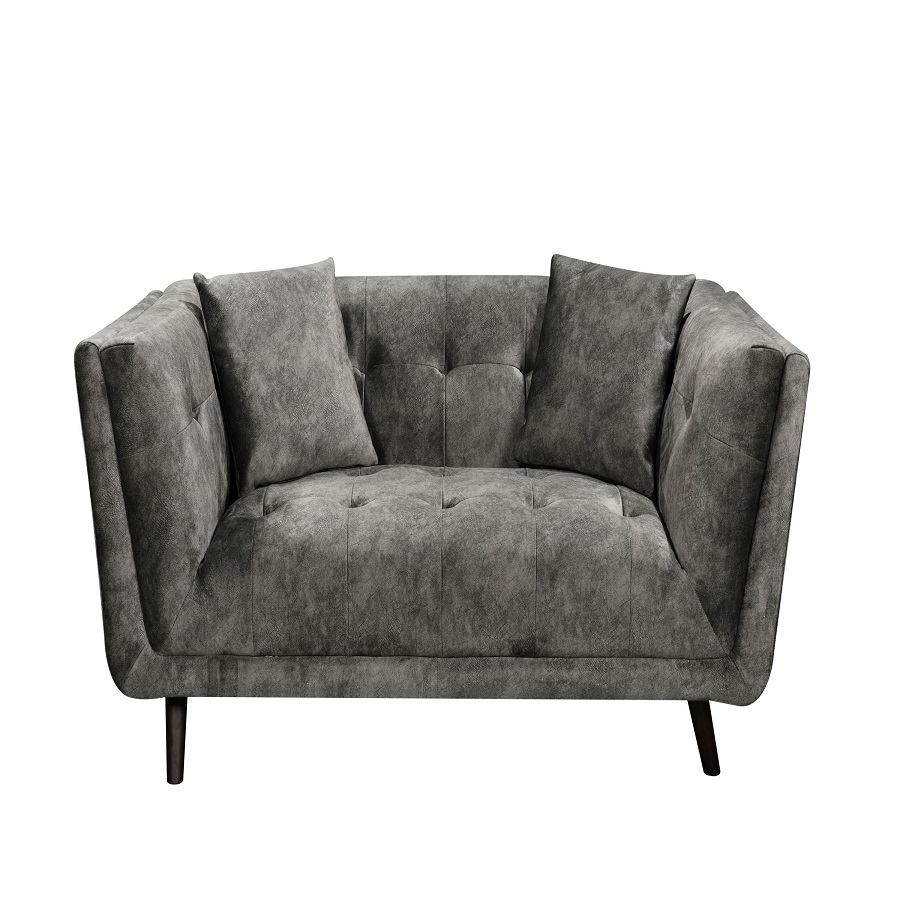Getting Started: Preparation Tips for Fabric Couch Cleaning
Before you dive into cleaning your fabric couch, a little preparation can make the process smoother. Start by gathering the necessary supplies like a vacuum cleaner with attachments, a soft-bristled brush, baking soda, white vinegar, mild dish soap, and clean cloths. If you have one, an upholstery cleaning machine can be very handy.
Next, read the care label located on your couch. This label provides vital information on the cleaning codes (W, S, W/S, X) specifying what cleaning products and methods are safe for your fabric.
To prepare your couch, use the vacuum cleaner to remove dust and loose debris from all surfaces, cushions, and crevices. If your couch has detachable cushions, take them off and vacuum both sides. For non-removable cushions, make sure to vacuum under them as well.
If your couch has a W or W/S code, you can proceed with water-based cleaning methods after vacuuming. If it’s coded S, stick to solvent-based cleaners or dry cleaning products. For an X code, brushing and vacuuming are your only safe options.
Lastly, perform a spot test with any cleaning solution you plan to use. Apply a small amount to an inconspicuous area to make sure it won’t cause any discoloration or damage. Once you’ve finished these preparation steps, you’re ready to start cleaning your fabric couch.

Understanding Cleaning Codes for Your Couch
Knowing the cleaning codes for your fabric couch is crucial for proper care. Here is a brief overview:
- W: This code means you can use water-based cleaners for your couch.
- S: Couches with an S code require solvent-based cleaners only. Avoid water.
- W/S: A W/S code means that both water and solvent-based cleaners are safe to use.
- X: These couches should only get vacuumed or brushed. No water or solvent-based cleaners should touch these surfaces.
Always check the manufacturer’s label for the cleaning code before starting. This label is usually found under couch cushions or on the base. It guides what products and methods are safe.
To protect your couch, perform spot tests with care products. Apply a small amount in a hidden area before cleaning the whole couch. This testing can prevent damage or discoloration.
Understanding these codes helps maintain your couch’s look and feel without any guesswork. Use the right cleaners and methods to keep your fabric couch fresh and clean.
The Baking Soda Method for Deodorizing and Spot Cleaning
For a simple and effective way to deodorize and clean your fabric couch, consider the baking soda method. Baking soda, also known as sodium bicarbonate, is a natural deodorizer and an excellent cleaner. Here’s what you need to do:
- Generously Sprinkle Baking Soda: Distribute baking soda evenly over the entire surface of your couch. Pay special attention to areas that get the most use.
- Let It Sit: Allow the baking soda to sit on your couch for about 15-20 minutes. This waiting period helps to absorb odors and loosen dirt.
- Vacuum Thoroughly: Use the brush attachment to vacuum up all the baking soda. This should also remove a lot of the dirt and debris.
For spot cleaning, follow these steps after deodorizing with baking soda:
- Create a Cleaning Paste: Mix a small amount of baking soda with water to create a paste.
- Apply to Stains: Gently rub the paste onto any spots or stains on the fabric using a soft cloth.
- Wait and Scrape Off: Let the paste sit on the stains for about 30 minutes before scraping it off.
- Final Vacuum: Go over the area again with a vacuum to ensure that you’ve removed all residue.
Using baking soda is a safe and easy way to keep your fabric couch smelling fresh and clean. For most fabric couches, this method works well, but always remember to do a spot test first. This will help prevent any unwanted damage to your fabric couch.
Spot-Cleaning Stains: DIY Solutions and Techniques
When accidents happen, quick action is key. For on-the-spot cleaning, here are easy DIY solutions:
- Mix Your Cleaner: Combine warm water, white vinegar, and mild dish soap in a bowl.
- Test First: Apply a bit to an unseen area of your couch to ensure safety.
- Blot the Stain: Dampen a cloth with your mixture, and gently tap on the spot.
- Don’t Soak: Use just enough solution to cover the stain; avoiding excess moisture.
- Rinse and Repeat: After blotting, use a damp cloth with plain water to rinse.
- Dry the Area: Pat with a dry towel or cloth, and let air dry completely.
For tougher stains, consider these methods:
- Baking Soda Paste: Mix baking soda with a bit of water to form a paste.
- Apply the Paste: Spread gently over the stain, using a finger or soft cloth.
- Wait it Out: Leave on for fifteen minutes, then brush or vacuum the residue off.
- Clean Fabric Shaver: Use this tool for fuzz or pills on your couch fabric.
Remember to handle different fabric codes (W, S, W/S, X) according to their requirements. And always take a gentle approach to keep your fabric couch in top condition. DIY cleaning can be simple and effective with the right techniques and care.

Deep Cleaning Your Fabric Couch: Approaches and Methods
Deep cleaning a fabric couch removes embedded dirt and revives its appearance. Here’s how.
Choose the Right Cleaning Solution
Check the cleaning code on your couch (W, S, W/S, X) to pick a safe cleaner. Water-based solutions work for ‘W’ and ‘W/S’ codes. Solvents are for ‘S’ code couches.
Tackle Stains with Baking Soda and Vinegar
Create a mixture of baking soda and vinegar. Apply it on stains, let it fizz, then blot gently.
Use a Steam Cleaner for ‘W’ or ‘W/S’ Couches
Steam can lift dirt without chemicals. Test a small hidden area first to ensure no damage.
Consider an Upholstery Cleaning Machine
An upholstery machine can deep clean without manual scrubbing. It’s great for larger or tough stains.
Dry Your Couch Properly
After cleaning, ensure your couch dries completely. Use fans or open windows to speed up drying.
With these methods, your couch will not only be clean but also refreshed and ready for use.
Maintenance: Keeping Your Couch Clean Over Time
To ensure your fabric couch remains in top shape, regular maintenance is key. Here is a straightforward routine to follow:
- Weekly Vacuuming: Every week, vacuum your couch with a brush attachment. This will remove dust and crumbs.
- Immediate Spill Response: Clean spills right away to prevent stains from setting in.
- Cushion Care: Fluff and rotate cushions regularly to keep them in good form.
- Monthly Spot-Cleaning: Once a month, inspect for spots and clean them using the right method.
- Professional Cleaning Advice: Consult professionals for dealing with tough stains or maintenance advice.
- Protective Measures: Use throws or covers if needed, especially in homes with pets or kids.
By following these steps, your fabric couch can maintain its look and comfort for years.
Upholstery Protection: Using Fabric Protection Products
To safeguard your fabric couch, consider fabric protection products. These products create a shield against spills, stains, and wear. Follow these simple steps to apply:
- Choose a Suitable Protector: Pick a product that matches your fabric couch’s type and cleaning code.
- Clean the Couch: Ensure the sofa is clean and dry before application.
- Test the Product: Apply the protector on a small, hidden spot to test for colorfastness.
- Spray Evenly: Holding the bottle at the recommended distance, spray uniformly across the couch surface. Don’t oversaturate.
- Dry Completely: Allow time for the protector to dry fully. This may take several hours.
- Reapply Regularly: Reapply the protector periodically, especially after deep cleanings.
Using fabric protection products can prolong the life of your couch. These protectors help repel liquids and contain spills, making future cleaning easier. Keep your fabric couch looking fresh and new by guarding it with these protective solutions.

Professional Care: When to Call in the Experts
When your DIY cleaning efforts fall short, it’s time to consider professional care for your fabric couch. Professionals offer expert deep cleaning that’s hard to achieve at home. Here are some signs that you need expert help:
- Persistent Stains: If stubborn stains don’t respond to your cleaning methods, professionals can help.
- Delicate Fabrics: Some materials require specialized care that only experts can provide safely.
- Odor Removal: Lingering smells often need professional-grade solutions to fully eradicate.
- Large or Complex Couches: Big or structurally intricate couches might be too challenging to clean on your own.
- Preventative Maintenance: Scheduling annual professional cleanings can extend your couch’s life.
Pros have the tools, knowledge, and products not typically available to homeowners. They handle various cleaning codes with precision, ensuring no damage. When in doubt, calling in the experts can save time, prevent damage, and keep your couch looking great.









